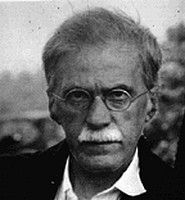BIOGRAPHY

1864-1946
The long and productive career of Alfred Stieglitz, whose influence defined American artistic photography in the first half of the twentieth century, can be seen as a series of distinct periods. In ten years of photographing the European countryside, Stieglitz garnered awards and attention. Back in America, Stieglitz embraced the Photo-Secessionists – the camera club he organized to give photography the same respect as fine art – who encouraged manipulation of the image, pre- and post-exposure, to affect its tonality. By 1910, Stieglitz exhibited his “straight photography,” where he took a noncomparative approach apparent in the straightforward immediacy of his cityscapes. For two decades, from 1916 onward, Stieglitz created portraits of his wife, artist Georgia O’Keeffe, comprising strong visages and fragments.
As an impresario, Stieglitz also played many roles: editor of Camera Notes and then Camera Work, curator of Pictorialist photography exhibitions, and gallery owner at 291, where O’Keeffe gained notoriety, the Modern Gallery, then The Intimate Gallery, and ultimately An American Place, the legendary exhibition space where Stieglitz introduced the work of Ansel Adams. The last years of his life, Stieglitz summered in Lake George, New York, completing his body of photographic work. Permanent collections include the Art Institute of Chicago, the Getty Museum and The Metropolitan Museum of Art.
